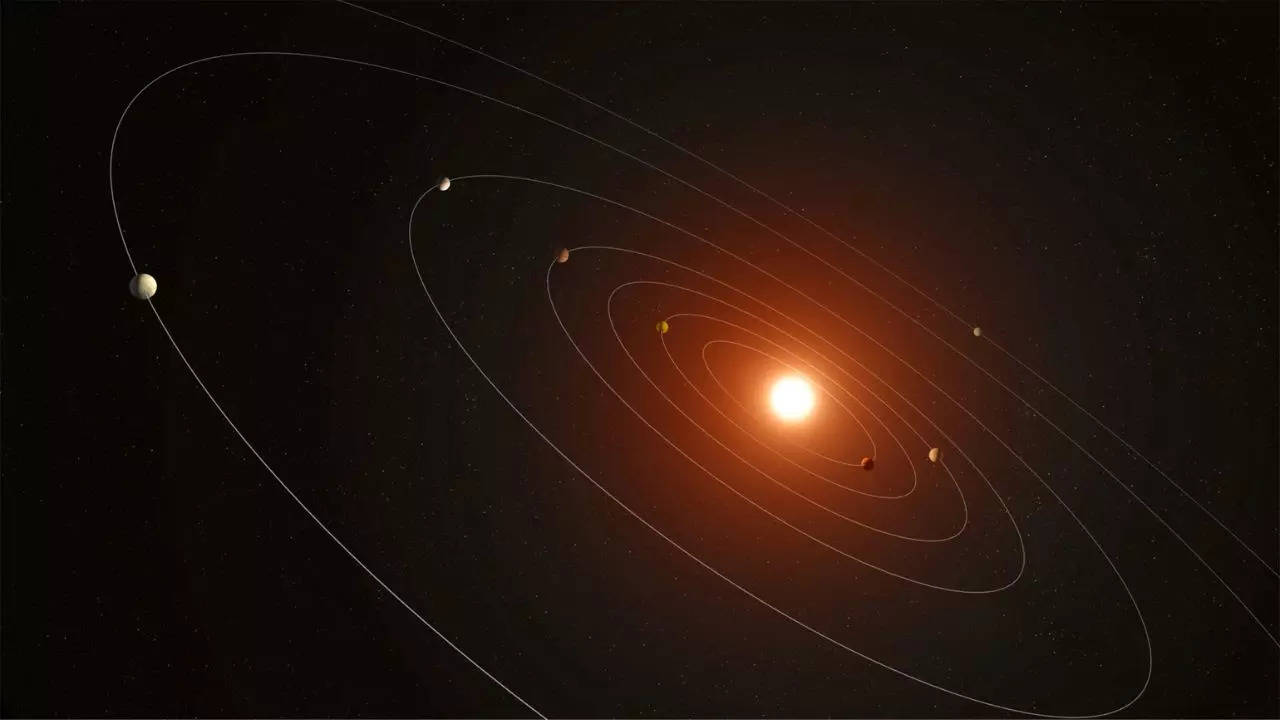NEW DELHI: Recent studies have introduced compelling evidence supporting the existence of a hypothetical ‘Planet Nine‘ in the outer reaches of our solar system, challenging previous skepticism around the topic. This potential planet, first hypothesized in 2016 by Caltech researchers Konstantin Batygin and Michael Brown, is thought to influence the orbits of distant icy bodies that cross Neptune’s trajectory.
The concept of Planet Nine emerged from the unusual orbit patterns of trans-Neptunian objects (TNOs), which are celestial bodies located beyond Neptune. These objects exhibit orbits that are highly inclined relative to the plane of the solar system, suggesting the presence of a massive external force. Batygin explained, “With this work, we looked at objects with long-period orbits but which also strongly interact with Neptune, specifically those that cross Neptune’s orbit.”
Critics have argued that the perceived clustering of these TNOs could be an observational bias. However, Batygin and Brown’s latest research focuses on low-inclination TNOs that do not show clustering yet display unique orbital characteristics, further supporting the Planet Nine theory. These TNOs have elongated orbits bringing them close to the sun, despite primarily residing hundreds of times farther away.
The study presents two possible scenarios for the observed trajectories of these distant objects: one influenced by the galactic tide of the Milky Way and another controlled by the gravitational pull of a Neptune-sized Planet Nine. Simulation results strongly favor the presence of Planet Nine, as galactic tides alone were insufficient to account for the observed orbital paths of the TNOs.
“We show that you can reject the scenario where this is all happening because of the galactic tides with an astonishing degree of statistical significance,” stated Batygin. “Conversely, the Planet Nine scenario is perfectly compatible with the data.”
The ongoing search for Planet Nine is set to receive a significant boost from the Vera Rubin Observatory, slated to begin operations later this decade in Chile. The observatory will conduct an all-sky survey that could either debunk the observational bias argument or uncover more TNOs influenced by Planet Nine, potentially even leading to the discovery of the elusive planet itself.
Batygin remains optimistic about the future findings, commenting on the observatory’s capabilities, “By virtue of its efficiency, maybe — just maybe — it will find Planet Nine. That would be pretty cool.”
The findings from Batygin and his team have been accepted for publication in The Astrophysical Journal Letters and are currently available as a pre-print. As the scientific community awaits further data, the hypothesis of Planet Nine continues to be a tantalizing prospect in unraveling the mysteries of our solar system’s outer edges.
The concept of Planet Nine emerged from the unusual orbit patterns of trans-Neptunian objects (TNOs), which are celestial bodies located beyond Neptune. These objects exhibit orbits that are highly inclined relative to the plane of the solar system, suggesting the presence of a massive external force. Batygin explained, “With this work, we looked at objects with long-period orbits but which also strongly interact with Neptune, specifically those that cross Neptune’s orbit.”
Critics have argued that the perceived clustering of these TNOs could be an observational bias. However, Batygin and Brown’s latest research focuses on low-inclination TNOs that do not show clustering yet display unique orbital characteristics, further supporting the Planet Nine theory. These TNOs have elongated orbits bringing them close to the sun, despite primarily residing hundreds of times farther away.
The study presents two possible scenarios for the observed trajectories of these distant objects: one influenced by the galactic tide of the Milky Way and another controlled by the gravitational pull of a Neptune-sized Planet Nine. Simulation results strongly favor the presence of Planet Nine, as galactic tides alone were insufficient to account for the observed orbital paths of the TNOs.
“We show that you can reject the scenario where this is all happening because of the galactic tides with an astonishing degree of statistical significance,” stated Batygin. “Conversely, the Planet Nine scenario is perfectly compatible with the data.”
The ongoing search for Planet Nine is set to receive a significant boost from the Vera Rubin Observatory, slated to begin operations later this decade in Chile. The observatory will conduct an all-sky survey that could either debunk the observational bias argument or uncover more TNOs influenced by Planet Nine, potentially even leading to the discovery of the elusive planet itself.
Batygin remains optimistic about the future findings, commenting on the observatory’s capabilities, “By virtue of its efficiency, maybe — just maybe — it will find Planet Nine. That would be pretty cool.”
The findings from Batygin and his team have been accepted for publication in The Astrophysical Journal Letters and are currently available as a pre-print. As the scientific community awaits further data, the hypothesis of Planet Nine continues to be a tantalizing prospect in unraveling the mysteries of our solar system’s outer edges.
Denial of responsibility! Swift Telecast is an automatic aggregator of the all world’s media. In each content, the hyperlink to the primary source is specified. All trademarks belong to their rightful owners, all materials to their authors. If you are the owner of the content and do not want us to publish your materials, please contact us by email – swifttelecast.com. The content will be deleted within 24 hours.


